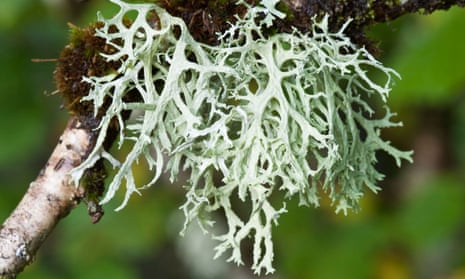In an otherwise thoroughly wintry landscape, oakmoss, Evernia prunastri, transforms dark thickets of bushes and trees with its almost white, flamboyant and fluffy appearance.
Although favouring oak trees the lichen grows on other woody stems. This particular species has made a sudden and dramatic return to areas of Britain and other parts of Europe from where it had almost completely disappeared. It had died out since the Industrial Revolution because the plant could not cope with the sulphur dioxide emissions caused by coal-fired power stations.
Where the coal stations have closed, oakmoss has bounced back. The densest colony of the lichen growing locally was on bushes in a nature reserve close to a wind turbine in Heath and Reach, Bedfordshire.
The oakmoss was doing the bushes no harm. It is an epiphytic lichen, meaning it grows on the surface of another plant but derives its nutrients from air, rain, water vapour or debris accumulating around it.
It is harvested in France for use as a fragrance and in some places people claim it has medicinal properties for intestinal problems, but best to simply admire its beauty.

Comments (…)
Sign in or create your Guardian account to join the discussion